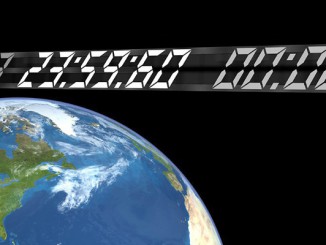
All large galaxies, including the Milky Way, are believed to harbour supermassive black holes in their cores. Some are relatively quiescent, but others generate enormous amounts of radiation, outshining their host galaxies as material is pulled in and heated to extreme temperatures. Such active galaxies are known as quasars.
Galaxy mergers across the cosmos are not rare, but what about quasars? As it turns out, very rare indeed.
Observations by the Subaru Telescope, the W.M. Keck Observatory and the Gemini North telescope in Hawaii indicate just 0.3 percent of all known quasars feature two supermassive black holes in ongoing galactic collisions. They are known as luminous dual quasars.
“In spite of their rarity, they represent an important stage in the evolution of galaxies, where the central giant is awakened, gaining mass, and potentially impacting the growth of its host galaxy,” said Shenli Tang, a graduate student at the University of Tokyo and co-author of the study.
One of the dual quasars found in a study led by lead author John Silverman of the Kavli Institute for the Physics and Mathematics of the Universe found two supermassive black holes 13,000 light years apart in a galaxy 4.6 billion light years away. Spectroscopy revealed broad emission lines in light from each object that indicate gas moving at thousands of kilometres per second – one of the signatures of supermassive black holes.
Dual quasars normally are difficult to detect because the radiation generated by material swirling around the central black holes outshines the host galaxy, making it difficult to separate the light from the two quasars.
“To make our job easier, we started by looking at the 34,476 known quasars from the Sloan Digital Sky Survey with (the Hyper Suprime-Cam on the Subaru Telescope)
to identify those having two (or more) distinct centres,” said lead author John Silverman of the Kavli Institute for the Physics and Mathematics of the Universe.
“We didn’t start out looking for dual quasars,” he said. “We were examining images of these luminous quasars to determine which type of galaxies they preferred to reside in when we started to see cases with two optical sources in their centres where we only expected one.”
Some 421 candidates were spotted, but on closer examination using Keck’s Low Resolution Imaging Spectrometer and Gemini’s Near-Infrared Integral Field Spectrometer, Silverman’s team was able to confirm just three dual quasars, including one that had been previously observed.



